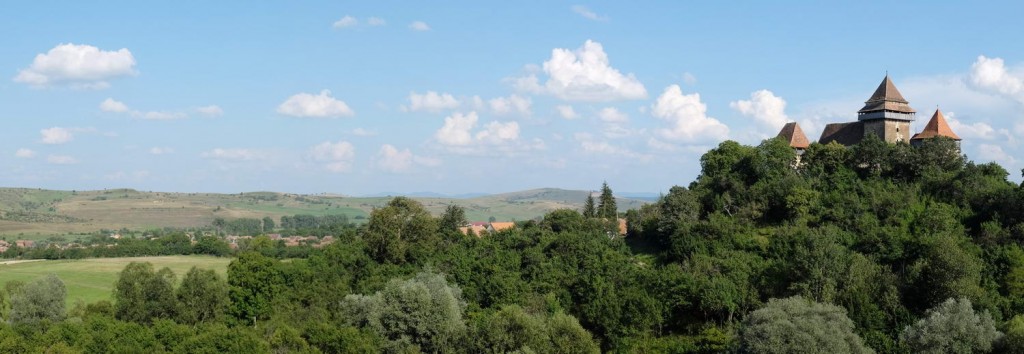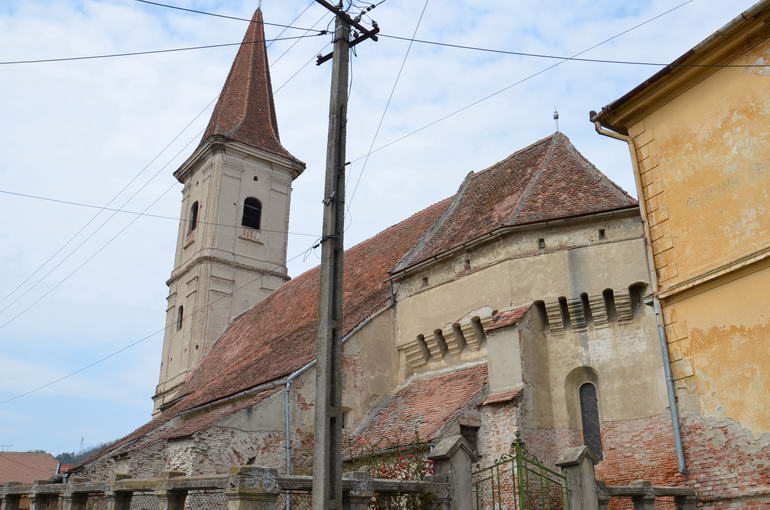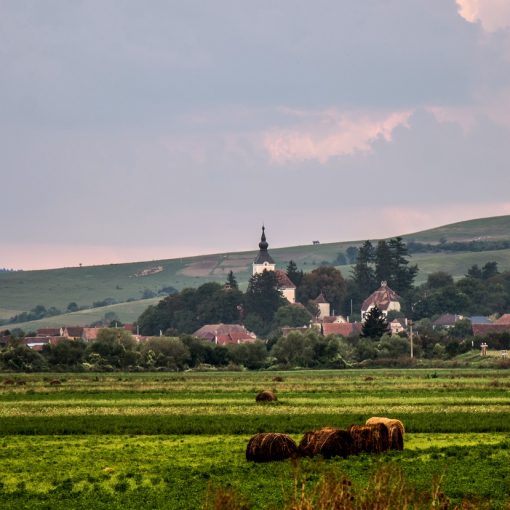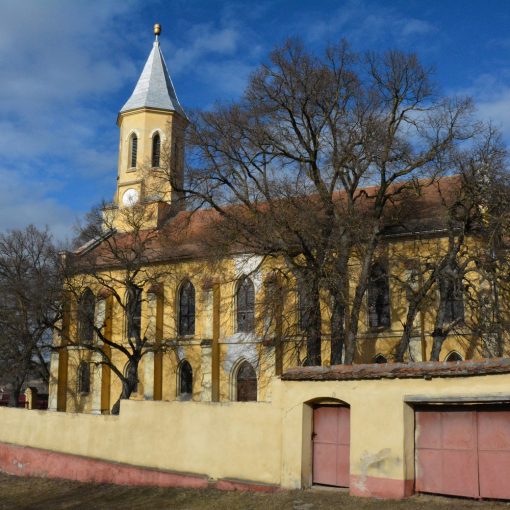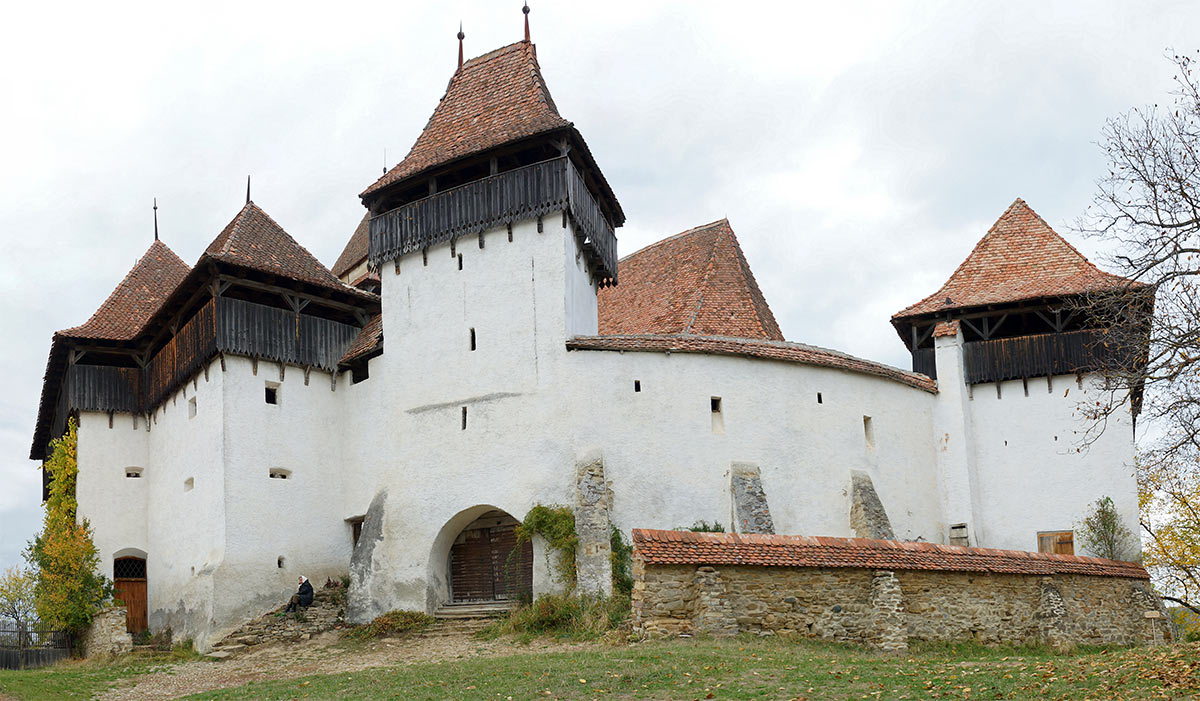
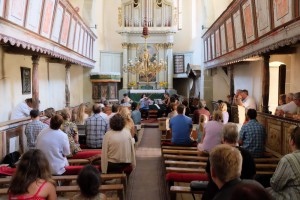 The fortified church in Viscri still stands as a striking example of Transylvanian defensive architecture. On the foundations of the former Romanesque basilica, built by the first Székely settlers a new chancel was erected after dismantling the apse. In 1500 the church was fortified. Therefore the hall was prolonged and connected with the western, until then freestanding, dungeon, which most probably belonged to an early extinct noble family. The tower was heightened with one level with room for bells and parapet walk and another defensive level with loopholes for arches was built in the roof. The defence level of the chancel was demolished in 1743. The 7 m high ring wall was built in early 16th century and during the 17th century was strengthened by fortified houses, defensive towers and parapet walk.
The fortified church in Viscri still stands as a striking example of Transylvanian defensive architecture. On the foundations of the former Romanesque basilica, built by the first Székely settlers a new chancel was erected after dismantling the apse. In 1500 the church was fortified. Therefore the hall was prolonged and connected with the western, until then freestanding, dungeon, which most probably belonged to an early extinct noble family. The tower was heightened with one level with room for bells and parapet walk and another defensive level with loopholes for arches was built in the roof. The defence level of the chancel was demolished in 1743. The 7 m high ring wall was built in early 16th century and during the 17th century was strengthened by fortified houses, defensive towers and parapet walk.
In the more peaceful times following 1743 grains storage rooms for the inhabitants replaced the parapet walk. The interior of the church still preserves the paneled ceiling from 1743 and the sober furnishing.
Place and surroundings
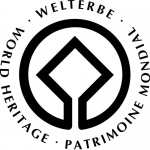 In Viscri one can find a particularly well-preserved and complete ensemble of regional typical rural architecture, an authentic image of the early 19th Century. Due to its great cultural and historical value, the village together with the fortified church were listed in 1999 as UNESCO World Heritage site. The exodus of the Transylvanian Saxons in the early 1990’s had a heavy impact on the built heritage.
In Viscri one can find a particularly well-preserved and complete ensemble of regional typical rural architecture, an authentic image of the early 19th Century. Due to its great cultural and historical value, the village together with the fortified church were listed in 1999 as UNESCO World Heritage site. The exodus of the Transylvanian Saxons in the early 1990’s had a heavy impact on the built heritage.
Village Projects
In 2000, the Mihai Eminescu Trust (MET) began working with villagers to develop ideas and concepts for preserving the traditional appearance of the village. Building on this, numerous farmhouses have been renovated in recent years using traditional techniques and the village has been given new economic prospects through gentle cultural tourism. King Charles has had a house on the village green since 2016. 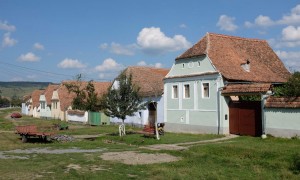
Activities
- 2019 Investigation of the roof structure as part of a master’s thesis
Contact:
Mrs. Gerhild Gross
Tel.: +40/745/324 394
Fundația Mihai Eminescu Trust

